Why Most Operating Models Fail
A concise comparison of the Industrial and Agile Product Operating Models, explaining why traditional structures fail in dynamic markets and how …
A description of how a unit creates and delivers value. It defines structure, decision rights, flow of work, and the way the unit coordinates to achieve outcomes. The unit can be a team, department, or entire organisation.


An operating model defines the essential structure and mechanisms by which an organization consistently delivers value, translating strategy into actionable workflows, roles, and decision rights. It represents the fundamental “way we work” across the organization, the enduring backbone that shapes how teams, technology, governance, and processes interact to achieve outcomes at scale. Unlike specific frameworks, methodologies, or practices, the operating model transcends any particular approach to define how the organization functions as a whole.
At its core, an operating model clarifies how work flows from idea to customer, how responsibilities are distributed, and how coordination happens across the organization. This systemic clarity enables teams to deliver predictably and adapt to change without constant reorganization or ad hoc fixes. A robust operating model supports sustainable delivery by making dependencies, handoffs, and value streams explicit, reducing friction and enabling effective execution.
It is not a set of tools or a collection of best practices, but the connective tissue that ensures alignment between strategic intent and execution, regardless of the specific delivery approach or technology stack. By establishing clear interfaces and accountabilities, the operating model empowers teams to work within defined boundaries, accelerates decision-making, and provides the foundation for scaling and resilience across the organization.
Organizations often need to specialize their operating models based on how they deliver value and their chosen delivery philosophy:
Product Operating Model : For organizations whose primary value delivery is through products, defining how teams structure work, decisions, and learning to maximize product outcomes. Can be implemented with various delivery approaches.
Agile Product Operating Model : A product operating model that specifically adopts agile methodologies, emphasizing iterative delivery, customer feedback, and continuous value creation.
AI Product Operating Model : Designed for organizations delivering value through AI-powered products, addressing unique concerns such as data governance, model lifecycle management, ethical considerations, and experimentation. Can be implemented with or without agile approaches.
When thoughtfully designed, an operating model enables organizations to integrate new capabilities, technologies, and ways of working without disrupting the core value delivery system. It ensures that adaptability and operational excellence are not at odds but mutually reinforcing. The operating model provides stability during change, clarity during complexity, and a foundation for sustainable growth and effectiveness across the entire organization. It is the answer to “how we work” that persists even as specific practices, tools, and technologies evolve.
A concise comparison of the Industrial and Agile Product Operating Models, explaining why traditional structures fail in dynamic markets and how …
Explains why dependencies are a sign of poor system design and outlines steps to eliminate them by aligning teams, clarifying ownership, and …
Explores when to use a single Azure DevOps project versus multiple projects, detailing impacts on flow, visibility, governance, and team collaboration …
Explores why traditional hierarchical organisations struggle in fast-changing markets and argues for agile, decentralised structures to boost …
Explores how effective capacity planning shifts focus from individual hours to system-level flow, using Lean and Agile principles to improve …
Learn how to achieve organisational agility by tailoring change to your unique context, building a guiding coalition, and engaging all stakeholders in …
Explains why lasting organisational change comes from adjusting systems, rules, processes, and structures, rather than trying to directly transform …
Explores how Taylorism shaped modern management, leading to rigid hierarchies, bureaucracy, and dehumanising work practices that persist beyond …
Explores how rigid, hierarchical structures hinder organisational agility and offers practical strategies for shifting to decentralised, empowered, …
Explores the Ghana Police Service’s shift to a modern, professional model using servant leadership, agile frameworks, and strategic change to restore …
We partner with businesses across diverse industries, including finance, insurance, healthcare, pharmaceuticals, technology, engineering, transportation, hospitality, entertainment, legal, government, and military sectors.

YearUp.org

Jack Links

Bistech

Qualco

ALS Life Sciences

Brandes Investment Partners L.P.

Xceptor - Process and Data Automation

Akaditi

SuperControl

New Signature

Flowmaster (a Mentor Graphics Company)

Higher Education Statistics Agency

Genus Breeding Ltd

Milliman

Slaughter and May

Emerson Process Management

Lockheed Martin

Graham & Brown

New Hampshire Supreme Court

Royal Air Force

Nottingham County Council

Washington Department of Transport

Washington Department of Enterprise Services

Department of Work and Pensions (UK)

Qualco

Illumina

Genus Breeding Ltd

Schlumberger

Epic Games

Healthgrades